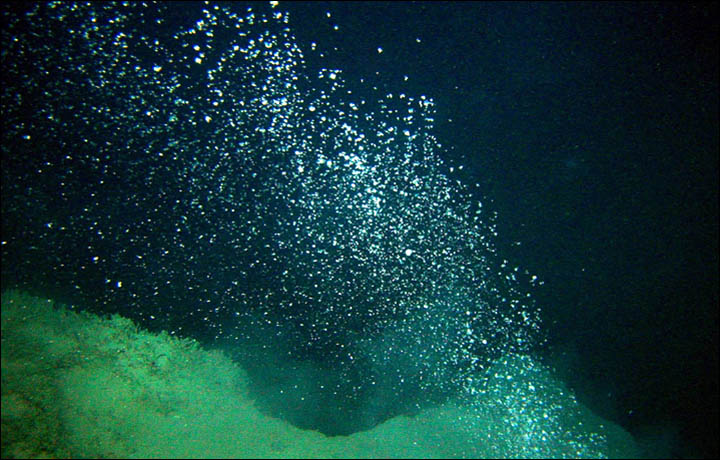
Large amounts of methane, generated by the degradation of submarine permafrost over thousands of years, are escaping the East Siberian Shelf, according to Natalia Shakhova from the University of Alaska and colleagues.
'Bubbles escaping from the sea floor carry large amounts of methane into the overlying ocean', it was reported. 'Furthermore, they observed that concentrations of methane in the sea water fell significantly following the passage of two storms, suggesting that storms help transport of methane to the atmosphere, where it acts as a potent greenhouse gas.'
Their findings 'have important implications for atmospheric emissions of methane from all Arctic seas that are underlain with subsea permafrost', state the authors. 'Increasing storminess and rapid sea-ice retreat causing increased methane fluxes from the sea are a possible new climate-change-driven processes.'
Vast quantities of carbon 'are stored in shallow Arctic reservoirs, such as submarine and terrestrial permafrost.
'Submarine permafrost on the East Siberian Arctic Shelf started warming in the early Holocene, several thousand years ago. However, the present state of the permafrost in this region is uncertain.'
Samples were taken using 'measurements collected from a sediment core, together with sonar-derived observations of bubble flux and measurements of seawater methane levels'.
The temperature of the sediment core ranged from -1.80C to 00 C.
'On the basis of the sonar data, we estimate that bubbles escaping the partially thawed permafrost inject 100-630mg methane into the overlying water column. We further show that water-column methane levels had dropped significantly following the passage of two storms.
'We suggest that significant quantities of methane are escaping the East Siberian Shelf as a result of the degradation of submarine permafrost over thousands of years. We suggest that bubbles and storms facilitate the flux of this methane to the overlying ocean and atmosphere, respectively.'



Reader Comments
to our Newsletter